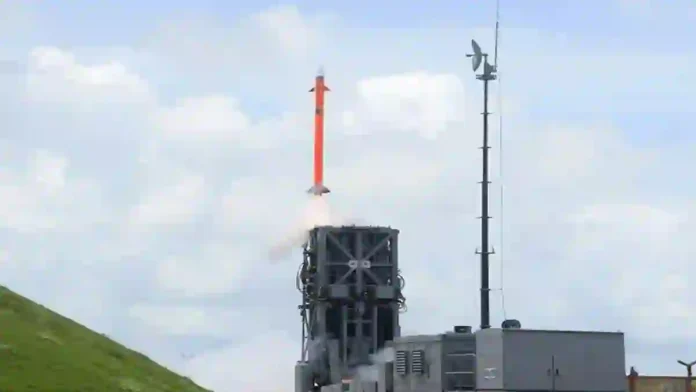Sources – frontierindia
India is taking unique measures to protect itself from the attacks from its surrounding countries. There will be repercussions for China and Pakistan in the future if they conduct missile attacks against India. A homegrown successor to the S-400 created in Russia is currently in the works in the country. Long Range Surface to Air Missile (also known as LRSAM) is the term given to this weapon, and the Defence Research and Development Organisation (DRDO) is responsible for outlining its design.
The project, valued at over 2.5 billion, will catapult India into an elite group of nations possessing indigenous capabilities to tackle aerial threats from long distances.
Read More – INDIAN NAVY MOVES MEGA DEAL TO BUILD 2nd INDIGENOUS AIRCRAFT CARRIER BY CSL
The nation is currently armed with S-400 missile defence systems, acquired from Russia and widely regarded as the world’s most cutting-edge missile defence system. Pathankot, which is close to the Pakistani border, and Siliguri, which is close to the Chinese border, both have S-400 installations. Any missile, fighter jet, or attack helicopter launched from Pakistan or China and travelling across the Line of Actual Control (LAC) or the Line of Control (LOC) can be stopped by the S-400.
The DRDO is working on a new indigenous ‘Long Range Surface To Air Missile’ defence system that will be quicker, more accurate, and more cutting edge than the S-400. The DRDO is working on an indigenous air defence system to hit long-range targets.
One of the capabilities of the LRSAM is the capacity to engage and destroy adversary fighter aircraft, ballistic missiles, and attack drones while in the air. The LRSAM will be a three-tiered system with missiles reaching targets at varying ranges, from the surface to the air. These missiles are designed to destroy enemy aircraft flying at various heights and distances throughout the sky. The indigenous LRSAM is anticipated to have a range equivalent to that of the S-400, which can travel up to 400 kilometres. It will have the power to intercept enemy missiles in the sky, just like the S-400. The LRSAM system will offer a multi-layered defence against hostile aircraft approaching from various distances.
It is powered by an indigenously developed dual rocket pulse motor and dual control systems to impart required manoeuvrability at the terminal phase. It is also equipped with a Radio Frequency seeker to identify, track, engage and destroy the target with high kill probability.




